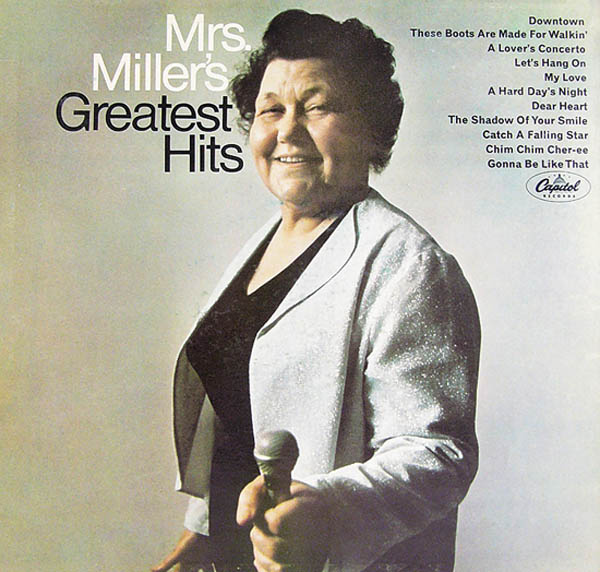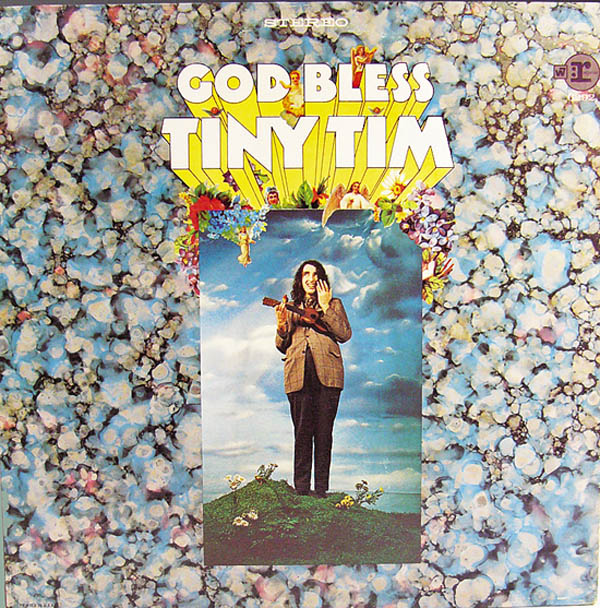Listen Up! Awesome Album Oddities
“Smack Dab In The Middle: Design Trends of the Mid-20th Century”
By Donald-Brian Johnson - July 10, 2020
Clint Eastwood. Rock Hudson. Lindsay Lohan and Paris Hilton. John Wayne, Sylvester Stallone, and Fabio. Hulk Hogan and Mr. T. Oh, and Lurch from The Addams Family. What could all these celebs possibly have in common? Well, at some point, each of them decided that it was time to take the bull by the horns, time to enter a recording studio, step before a microphone, and bravely cut an album. Why? According to Telly Savalas (who had more than one recording to his chrome-domed credit), Hey, I was asked to. The first modern recorded wonder was Florence Foster Jenkins. In 1912, the wealthy Pennsylvanian became determined to win over New York with her wavery operatic soprano. But, as one reviewer baldly put it, Florence couldnt carry a tune in a bucket. No one denied, however, that she certainly seemed to be enjoying herself. When an aria called for a heavenly presence, for instance, the matronly Madame Jenkins happily donned full angelic regalia, wings, robe, and tinsel halo. Soon, word got out, her recitals were something to see (and hear). In 1944, 76-year-old Florence Foster Jenkins finally made her Carnegie Hall debut. Tickets had been sold out for months. Madame gave her audience what theyd been craving, an evenings caterwauling of the highest caliber. She died a month later, having blithely sailed past the critical brickbats thrown her way. As the New York World-Telegram put it, She was exceedingly happy in her work. It is a pity so few artists are. That happiness was communicated as if by magic to her hearers. (And, since Meryl Streep played Madame in a movie, the legend lives on.) The Jenkins legacy saw a resurgence in the 1960s with the emergence of Elva Miller, a California housewife whose wobbly renditions of such pop hits as Downtown caught the attention of Johnny Carson. Mrs. Millers unique vocalizations, sometimes accompanied by whistling, made her a favorite with Tonight Show audiences. Carson also championed the career of ukulele-playing, falsetto-voiced Tiny Tim. Thanks to Tonight Show publicity, Tinys one-of-a-kind interpretation of Tip-Toe Through the Tulips became a chart-topper. Television exposure seemed to draw neophyte vocalists to the recording studio like moths to a flame. Sometimes, entire television casts gathered around the studio mics, perhaps hoping for safety in numbers. Bonanzas Cartwright clan came out with Ponderosa Party Time, featuring their singin, fiddlin, banjo pickin, and guitar strummin. Especially in demand are recordings by original Star Trek cast members. Leonard Nimoy Presents Mr. Spocks Music From Outer Space interspersed Nimoys plaintive vocals on such melodies as Lost in the Stars with Spockish narrative ruminations (Twinkle, Twinkle Little Earth) and the occasional bouncy instrumental (Music to Watch Space Girls By). Nimoys career continued to live long and prosper, even if the album didnt. For appreciators of the absurd, the list of album oddities is (fortunately) endless. The prices are right, too. Christmas with Colonel Sanders will set you back just a finger-lickin-good $5 to $10. Robert Redford narrating The Language and Music of the Wolves is in the $10-$15 range, probably because the album also includes a full side of actual wolf noises. In the $20-and-up category are albums boasting themes completely out of sync with the performers. One example: in 1966, decades after her reign as a 1930s screen queen, sultry Mae West recorded Way Out West, putting her one-of-a-kind stamp on such rock n roll classics as Twist and Shout. The heavily retouched cover photo of a septuagenarian evening-gowned Mae, surrounded by her youthful, and somewhat nervous-looking backup boys, is alone worth the price of the album. When you spot an album oddity at the next garage sale, take an inexpensive gamble and snap it up. Regardless of what it sounds like, just remember: it took plenty of old-fashioned fortitude to brave the terrors of the microphone. Celebrity is fleeting. Cashing in on it remains a time-honored tradition. Albums courtesy of Fran and Ken Hoffman. Photo Associate: Hank Kuhlmann. Donald-Brian Johnson is the co-author of numerous Schiffer books on design and collectibles, including Postwar Pop, a collection of his columns. He valiantly listened to most of the albums mentioned (well, parts of them anyway) while researching this article.




SHARE
PRINT